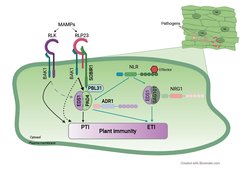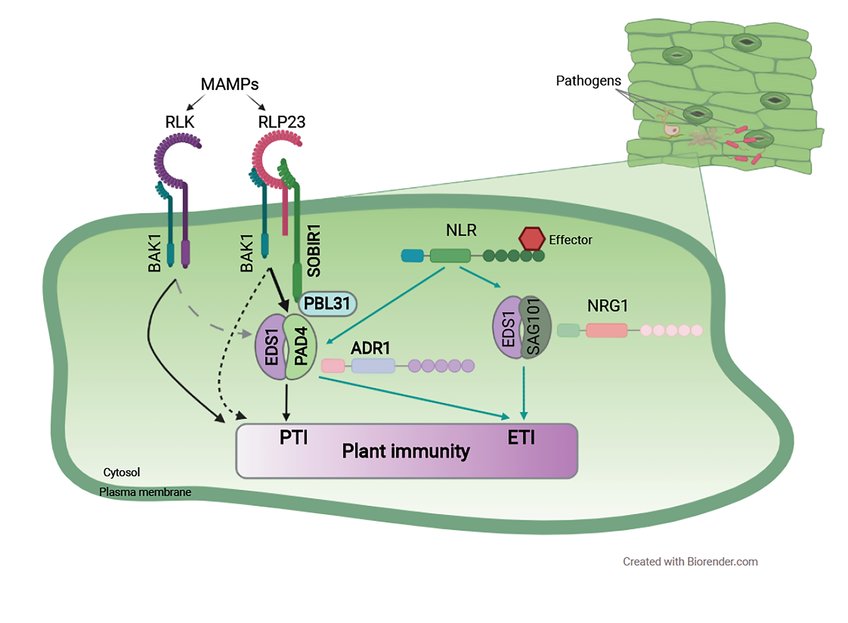An Arabidopsis regulatory module controlling pathogen resistance triggered by cell-surface and intracellular receptors
Collaborative research led by the group of Thorsten Nürnberger at ZMBP (University of Tübingen) and Jane Parker (Dept. Plant-Microbe Interactions at MPIPZ Cologne) with colleagues at ZMBP and MPIPZ has identified a convergence point for defence signalling triggered by plant cell-surface (microbial pattern recognition) and intracellular (pathogen effector recognition) immune receptors. These two receptor systems use a regulatory node consisting of three proteins: EDS1, PAD4 and ADR1 to mobilize anti-pathogen defence pathways.
I think identifying this plant node as a major control point for pathogen resistance triggered outside and inside host cells is highly significant. It would explain why two pathogen detection machineries converge on similar defences to combat disease.
Jane Parker
The new findings provide an excellent lead to how and where inside host cells cell-surface and intracellular pathogen detection systems intersect to confer strong disease resistance.

Upon ligand perception, Arabidopsis cell-surface RLK pattern-recognition receptors interact with BAK1 to activate pattern-triggered immunity (PTI). RLKs have a partial requirement for the EDS1‑PAD4‑ADR1 node (grey dashed arrow). PTI conferred by PRR RLP23, following dimerization with RLKs BAK1 and SOBIR1, signals primarily through EDS1-PAD4-ADR1. Together with an important cytoplasmic kinase (PBL31), EDS1, PAD4 and ADR1 can be detected in close proximity to an SOBIR1/RLP23 complex at the plasma membrane before and after RLP23 elicitation, suggesting presence of pre-formed complexes ready for downstream signalling. Some RLP-triggered defences do not require EDS1-PAD4-ADR1 (black dashed arrow). Effector-triggered immunity (ETI) conferred by NLR receptors uses EDS1-PAD4-ADR1 and/or a related node consisting of EDS1-SAG101 and NRG1 (green arrows). This model further erodes a previously held strict distinction between PTI and ETI, and supports the concept that surveillance systems for pathogen disturbance outside and inside plant cells use overlapping machineries for disease resistance.












